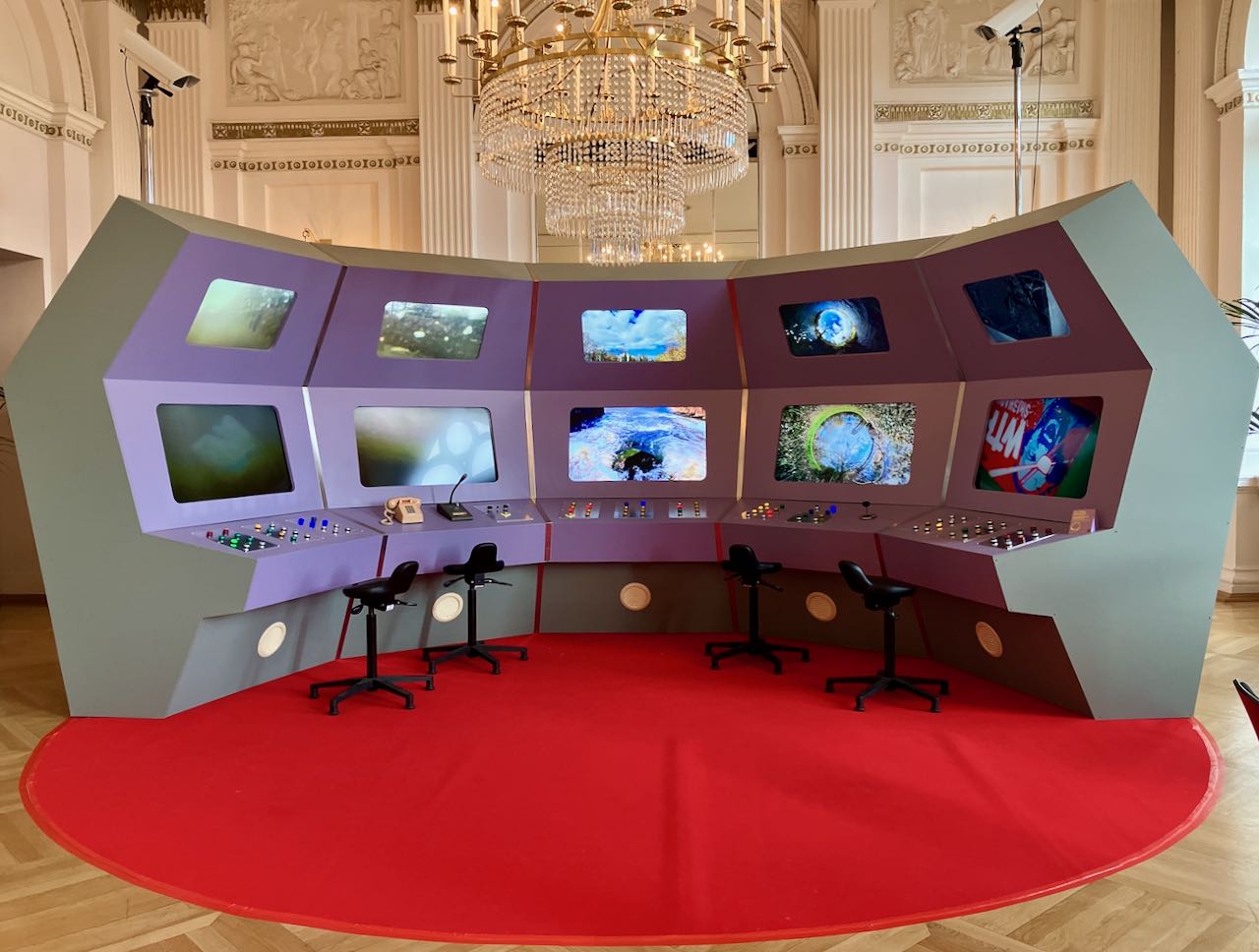The control center of the RingModulator was created during the Wagner Ring Festival of the Staatstheater Braunschweig.
The project was about connecting different artworks distributed over the city centrally in the Spohrsaal of the Staaatstheater.
I do not go into the statement of the work and the effect and leave this to the reader to interpret. However, in the following I present the technical realization and try to give tips for similar productions.
Video Processing
The installation contains 10 monitors, each of which receives its video signal via HDMI. For this, 3 videowall controllers are used, which receive a 4K video signal in the input via HDMI and split this into four partial images. Thus, four monitors are treated as one large screen with the same ratio.
The videowall controllers are physically installed in the middle of the four monitors, which means that the HDMI signal paths to the monitors are very short. Directly next to the videowall controllers are NDI players converting a 4k NDI stream into a 4k HDMI signal. The three NDI players are connected to the PC via a gigabit network switch. This makes all HDMI cables very short and the PC can be placed further away, which improves maintainability and ergonomics for working on the PC.
Audio
The audio is reproduced by two IBEAM VT-200 solid-borne transducers, which are screwed to the front panel inside the cabinet. The transducers in combination with the large wooden surfaces of the body can reproduce very low frequencies, so that the whole control center can be used to vibrate.
Interaction Design
Software
The presented content consists of pre-produced video and audio content, which is complemented by real-time generated material and effects.
TouchDesigner was used as media server and mapping software. As interface between the OSC signals of the ESP32 microcontroller and TouchDesigner the open source tool Chataigne was used.
The OSC Query component of Jinglissimo has taken over the linking of the switch signals and the TouchDesigner modules.
